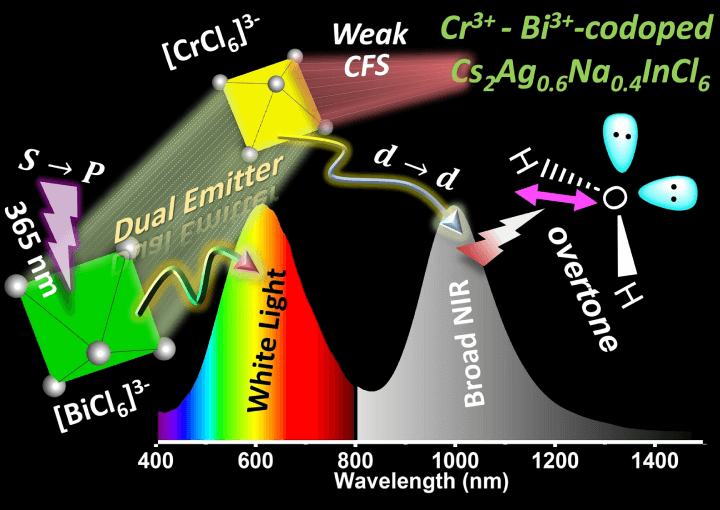LED Technology in Agriculture: A New Era of Food Quality Control
Insights | 03-08-2023 | By Robin Mitchell
Researchers have developed a novel method using LEDs to detect water concentrations in rotting foods, a breakthrough that could help identify spoiled produce earlier and reduce food waste. What challenges does produce face, what did the researchers develop, and how could it help reduce food waste in the future?
The Persistent Challenge of Food Spoilage
Agriculture, an industry that has significantly transformed mankind, has its own set of challenges. Despite the advances, one persistent issue is food spoilage post-harvest. This not only affects the taste and health factors but also contributes to food waste.
The development of the freezer and inert atmospheres allow food to be freshly packaged and transported to supermarkets, but even then, it can be hard to actually determine which produce remains fresh. While some basic tests can be done to determine which food has turned, there are few options currently available, making it difficult to accurately determine which food should be thrown and which can be sold.
To try and compensate for this, food production often far exceeds levels of consumption, and massive amounts of food waste end up being produced worldwide. Many have noted that the level of food waste is far greater than it needs to be, indicating that plenty of edible food frequently finds its way into landfills. Worse, the environmental impact of over-producing food can result in the mass clearing of forests and natural habitats and the poisoning of rivers and water sources from farms that turn to high concentrations of fertilisers and pesticides to get high yields.
Simply put, the world produces far more food than is needed, and a significant portion ends up wasted, resulting in unnecessary environmental damage and artificially high food prices.
Innovative LED Technology: A New Frontier in Detecting Food Spoilage
Recognising the challenges faced with food waste and keeping produce fresh, researchers from the Indian Institute of Science Education and Research recently demonstrated a new technology that takes advantage of LEDs to identify the water concentration in food as it rots.
The researchers from the Indian Institute of Science Education and Research developed a phosphor, namely, Cr3+-Bi3+-codoped Cs2Ag0.6Na0.4InCl6, that simultaneously emits warm white light and broad near-infrared (NIR) radiation. This dual emitter is designed to provide visual inspection and early signs of rotting of food products. The broad NIR emission is absorbed by the vibrational overtones of water molecules present in food items, providing non-invasive image contrast to assess food freshness. Read the full research here.
According to the researchers, off-the-shelf LEDs are unable to provide the light needed to perform spectroscopy, so the first step that the researchers took was to modify existing LED technology. By utilising perovskite materials, the researchers were able to make LEDs that emit both visible and infrared light. From there, a coating of phosphorus was applied to the LED so that it produced white light, thereby creating an LED that can be used to perform both visual analysis and infrared spectroscopy of a sample.

Researchers utilise perovskite LEDs to detect excess water in produce.
The researchers from the Indian Institute of Science Education and Research developed a unique LED technology to tackle this issue. They modified off-the-shelf LEDs to emit both visible and infrared light, using perovskite materials. A coating of phosphorus was then applied to produce white light. This dual-function LED can perform visual analysis and infrared spectroscopy of a sample, making it a powerful tool for early detection of food spoilage.
The technology utilises a phosphor emitting both white light and broad near-infrared (NIR) radiation, enabling non-invasive food inspection using phosphor-converted light-emitting diodes (pc-LEDs). The broad NIR peak overlaps with water vibrational overtone absorption at ≈1000 nm, making it a powerful tool for early detection of food spoilage. Learn more about the scientific process here.
"Our technology has the potential to revolutionise the way we detect food spoilage. By identifying higher water concentrations in rotting food, we can detect spoilage at an early stage, reducing food waste and potentially saving resources," said one of the researchers from the Indian Institute of Science Education and Research.
The Potential of LED Technology in Reducing Food Waste
If shops have the ability to better recognise which produce is at risk of rotting, sell-by dates can be better adjusted, thereby eliminating the need for a blanket value that is based on an estimate as opposed to the actual condition of the food itself. By doing so, food can remain on shelves for longer, thereby reducing the amount of waste (as consumers are more likely to purchase the food).
Having an accurate system for determining food freshness also allows shops to more efficiently apply discounts on food that are at risk of turning. Again, this can see savings passed onto consumers while helping to reduce the overall amount of food waste as fewer fresh produce are required.
Finally, the ability to reduce food waste also helps to reduce the impact of intensive farming and mass agriculture. If less food is required, then there is less demand to make more land arable, and this will directly result in a reduction of the destruction of vast quantities of natural landscapes and habitats.
The LED technology developed by these researchers has the potential to revolutionise the food industry by reducing waste and improving food safety. As this technology continues to be refined and adopted, we could see a future where food spoilage is detected early and accurately, leading to significant environmental and economic benefits.
Further Reading
For those interested in delving deeper into the topics discussed in this article, here are some recommended resources:
- The original research paper on the LED technology for detecting food spoilage
- The Indian Institute of Science Education and Research, where the research was conducted
- A detailed article on how IoT is revolutionising agriculture
- An article on another innovative technology for food safety: a sensor using graphene

